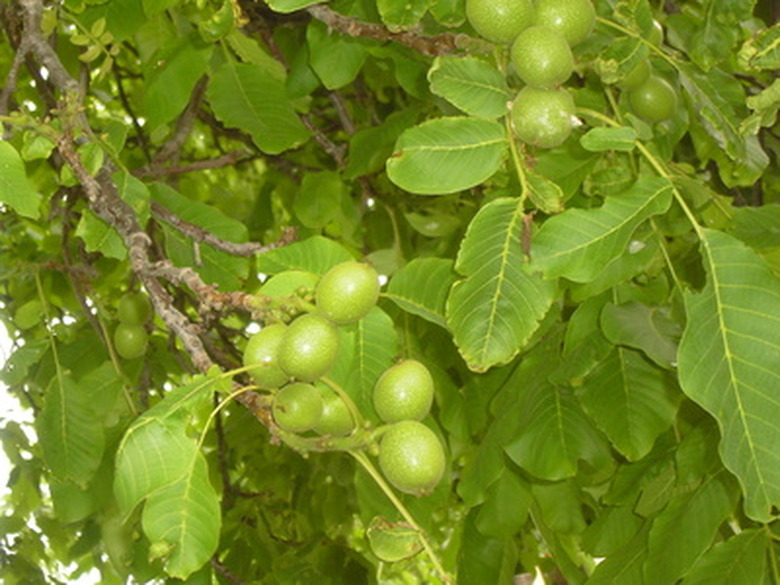Growth Rate Of Walnut Trees
Loved by squirrels as a tasty and nutritious meal, people have to time their harvest of the black walnut (Juglans nigra) to reap a plentiful crop. This hardwood deciduous tree native to the eastern U.S. also makes an attractive lumber wood with deep coloration for cabinetry, floors and furniture. When mature, the black walnut reaches a height of 70 to 100 feet tall and 70 feet wide in U.S. Department of Agriculture hardiness zones 4 through 9.
Significance
According to the University of Minnesota, walnut trees begin producing nuts after 10 years of age and reach production peak after 30 years. Property owners wishing to grow and fell walnut trees to sell or use as lumber want large trees–taking 35 to 50 years to attain.
Time Frame
Walnut trees need a frost-free growing season that is at least 140 days long, ideally over 170 days, according to the University of Minnesota. Initial appearance of leaves and flowers occurs in spring, possibly nipped by an untimely late frost. Elongation of branches, the annual "growth spurt," is complete by midsummer, at which time leaves make food to develop fruits and store energy in the roots prior to leaf drop in early fall. The University of Nebraska, Lincoln, notes that established walnut trees grow 12 to 24 inches annually. While a seedling, it adds 36 to 48 inches of height in each of the first two growing seasons.
- Loved by squirrels as a tasty and nutritious meal, people have to time their harvest of the black walnut (Juglans nigra) to reap a plentiful crop.
- Elongation of branches, the annual "growth spurt," is complete by midsummer, at which time leaves make food to develop fruits and store energy in the roots prior to leaf drop in early fall.
Effects on Growth Rate
Black walnut trees growth their fastest and lushest when on deep soils that are fertile and some form of loam (not sand or clay). Growth is fastest where topsoil is a minimum of 30 inches deep before a gravelly or hard substrate level occurs. Gravelly soils that are depleted of organic matter slow growth rate, as do dry soils–those that do not receive at least 35 inches of rain or irrigation annually. The U.S. Forest Service notes that black walnut naturally drops its foliage earlier than other native hardwood trees, anytime from 115 to 135 days after the emergence of the first leaves. Do not become concerned with the late summer leaf drop, as annual growth is most intense in late spring and done by midsummer.
Mulch Considerations
To improve root establishment of younger trees and increase growth, diminish weed competition. Applying and maintaining a 3-inch layer of organic mulch broadly across the root zone of a walnut tree is beneficial, according to the University of Minnesota.
- Black walnut trees growth their fastest and lushest when on deep soils that are fertile and some form of loam (not sand or clay).
Micro-Climate Benefits
Another option to increase walnut tree growth is siting trees in optimal locations or microclimates on a property. Avoid planting on the southern or western slopes of hillsides, which are too hot and dry. Focus on planting on northern and eastern slopes near a water source to ensure the tree always enjoys moist soil. The University of Minnesota notes that planting walnut trees on the leeward side of a tree grove increase vigor, too. Placing a ring of sturdy black netting in a wide cylinder around the base of walnut seedlings prevents deer and rabbits from eating bark in winter.
